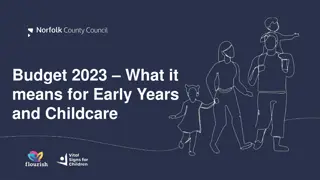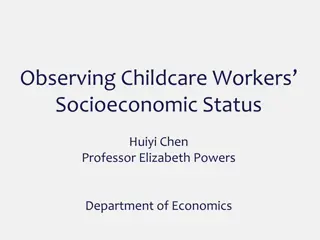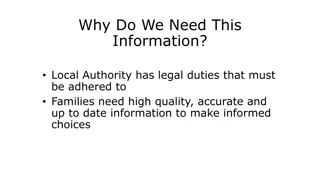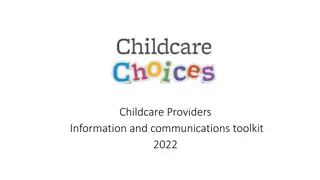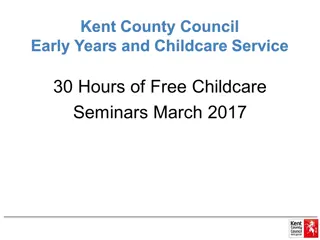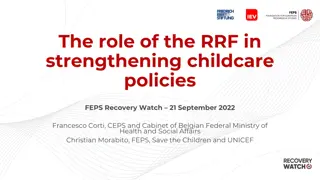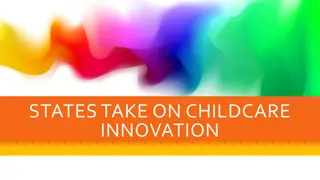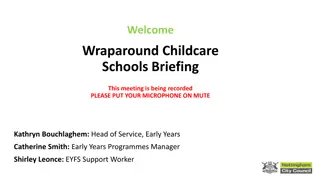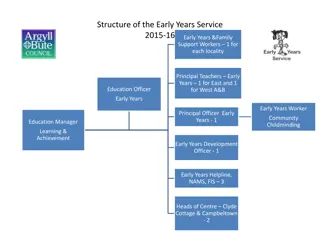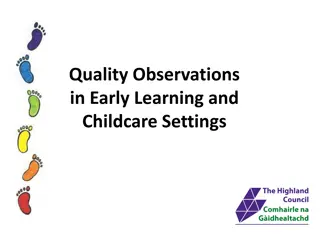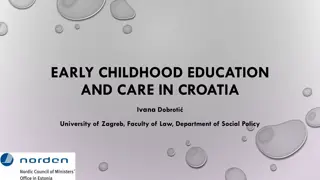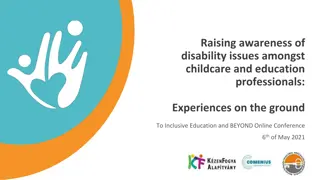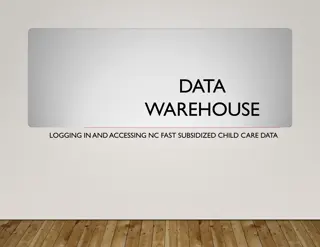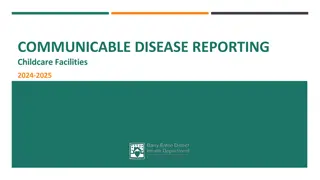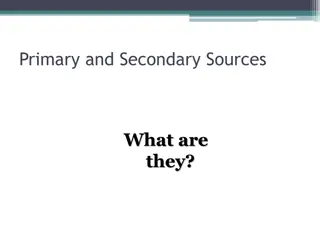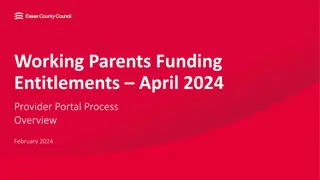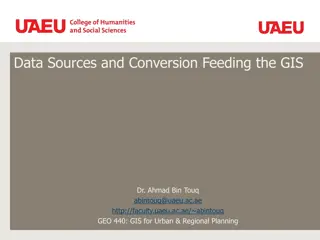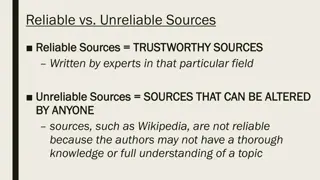Key Data Sources and Developments in Early Education and Childcare (EEC)
Comprehensive overview of key data sources and policy developments in the field of early education and childcare (EEC), including insights from surveys on parental perspectives and the impact on policy initiatives. The analysis highlights the importance of targeted support for different demographics and the need for provision adjustments to meet diverse family needs.
Download Presentation

Please find below an Image/Link to download the presentation.
The content on the website is provided AS IS for your information and personal use only. It may not be sold, licensed, or shared on other websites without obtaining consent from the author. Download presentation by click this link. If you encounter any issues during the download, it is possible that the publisher has removed the file from their server.
E N D
Presentation Transcript
Key data sources on early Key data sources on early education and childcare (EEC) education and childcare (EEC) Ivana La Valle ICMEC Visiting Scholar ivanalavalle@outlook.com
Policy and data developments in EEC In the late 1990s early education and childcare (EEC) was placed on the policy map: In 1998 the first National Childcare Strategy was launched in England: affordable and good quality EEC for all in 1998-9 two national survey series were set up which have provided data on trends in take- up and demand for and supply of EEC for the past 15 years
The childcare and early years survey of parents Regular surveys of sample of 5,000-7,000 parents of 0-14 year olds Face-to-face interviews to collect detailed information on EEC take-up: odifferent types of provision formal and informal owhen and how much provision families use and why ocost of provision and take-up of subsidises osources of information about EEC oviews on quality and quantity of local provision obarriers to take-up olinks between work and childcare ofamilies socio-demographic characteristics https://www.gov.uk/government/statistics/childcare-and-early-years-survey-of- parents-2012-to-2013
Parents survey series has informed key policy developments Who uses EEC and who doesn t use EEC and why choice versus barriers Highlighted need for targeted support e.g. for low income families, those living in disadvantaged areas, disabled children, lone parents Highlighted how provision needs to change to meet families diverse needs e.g. more flexibility, better quality, different opening hours, provision at different times (holiday, after and before school, atypical hours) Helped to monitor key policy initiatives e.g. take-up of free entitlement, affordability, suitability of EEC information, supporting parental employment, meeting government targets
Parents survey: indirect influence Developed and operationalised key definitions (e.g. EEC, different types of provision) and aspects of provision (e.g. quality, flexibility, affordability) widely used in: oother major government surveys e.g. Family Resources Survey, Families and Children Survey, Maternity Rights Survey oother major data sources of families and children e.g. the Millennium Cohort Study, Understanding Society oevaluations of major EEC initiatives e.g. Neighbourhood Nurseries, pilot of the free entitlement for disadvantaged two year olds, children s centres Consistency across different data sources has allowed comparative analysis with greater explanatory power that would be possible from a single data source
Childcare and early years providers survey series Regular surveys of sample of around 10,000 EEC providers (i.e. nursery classes and schools, day nurseries, playgroups, out-of-school clubs and childminders) Telephone interviews to collect detailed data on EEC supply: oProvider characteristics - ownership, opening times, length of operation oNumber of places for different ages, vacancies oStaff characteristics, qualifications, training and pay oRecruitment and retention oIncome, expenditure and business performance https://www.gov.uk/government/uploads/system/uploads/attachment_data/file /355075/SFR33_2014_Main_report.pdf
Providers survey series has informed key policy developments Monitor whether trends in number of places offered are in line with government expansion plans Who is providing what type of service, where and at what cost Who provides publicly funded EEC Which providers are growing/declining and why Which providers make a profit/loss and why Whether staff s qualification levels, pay and training are improving in line with aim of increasing EEC quality Whether recruitment and retention trends are likely to support expansion and quality improvement
Conclusion: the power of data Robust, comprehensive and regular data on EEC has: played a key role in developing and refining EEC policy and programmes ensured some consistency across major relevant data sources which has resulted in an effective use of these data sources provided a key accountability mechanism government data has been used to highlight when the government failed to deliver on its promises created a cross-party consensus on what needs to be done?


